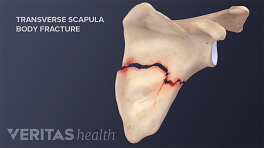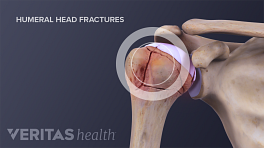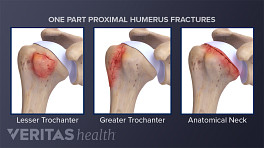Doctors typically diagnose stress fractures using a three-step process, as follows:
In This Article:
Detailed patient history. The doctor will begin by interviewing the patient, asking when the pain and/or weakness in the affected area first became noticeable, what the athlete’s recent training schedule has consisted of, and what other symptoms may have occurred and when. The doctor may also inquire about eating habits, any past injury history, and what medication(s) the patient is taking or has taken in the past. Young female athletes will also be asked about their menstrual cycle, including whether the menses have stopped or have been irregular, as this may be an indicator for early-onset osteoporosis. 1 Wedro B. Stress fracture. eMedicineHealth.com. June 11, 2014: http://www.emedicinehealth.com/stress_fracture/article_em.htm. Accessed December 22, 2014.
Physical examination. The doctor may palpate (touch) the affected area to test for pain, tenderness, and swelling, as well for as any associated risk factors for stress fracture such as weak muscles and/or bone misalignments. 1 Wedro B. Stress fracture. eMedicineHealth.com. June 11, 2014: http://www.emedicinehealth.com/stress_fracture/article_em.htm. Accessed December 22, 2014. If a stress fracture in the lower extremities is suspected, the doctor may ask the patient to stand, step, or hop up and down to gauge pain and/or weakness levels during activity. 2 Beck, B. Stress fractures. American College of Sports Medicine, Current Comments. https://www.acsm.org/docs/current-comments/stressfractures.pdf. Accessed December 23, 2014. Stress fractures in the arms, hips, or chest may require other types of exercises for accurate diagnosis.
Diagnostic imaging. Stress fractures often do not show up on X-ray right away. 2 Beck, B. Stress fractures. American College of Sports Medicine, Current Comments. https://www.acsm.org/docs/current-comments/stressfractures.pdf. Accessed December 23, 2014. , 3 American Academy of Orthopedic Surgeons and the American Orthopedic Society for Sports Medicine. Stress fractures. October 2007: OrthoInfo. http://orthoinfo.aaos.org/topic.cfm?topic=a00112. Accessed December 22, 2014. Therefore, other types of diagnostic testing such as magnetic resonance imaging (MRI), computerized tomography (CT) scans, ultrasound, or Technetium-99 bone scans are used to confirm a suspected stress fracture diagnosis. 2 Beck, B. Stress fractures. American College of Sports Medicine, Current Comments. https://www.acsm.org/docs/current-comments/stressfractures.pdf. Accessed December 23, 2014. X-ray can be used to detect older stress fractures that have partially healed, and/or stress fractures that have progressed to nonunion (hairline) or displaced fractures.
Once the doctor has confirmed the existence and location of one or more stress fractures, an appropriate treatment protocol can be developed.
- 1 Wedro B. Stress fracture. eMedicineHealth.com. June 11, 2014: http://www.emedicinehealth.com/stress_fracture/article_em.htm. Accessed December 22, 2014.
- 2 Beck, B. Stress fractures. American College of Sports Medicine, Current Comments. https://www.acsm.org/docs/current-comments/stressfractures.pdf. Accessed December 23, 2014.
- 3 American Academy of Orthopedic Surgeons and the American Orthopedic Society for Sports Medicine. Stress fractures. October 2007: OrthoInfo. http://orthoinfo.aaos.org/topic.cfm?topic=a00112. Accessed December 22, 2014.










